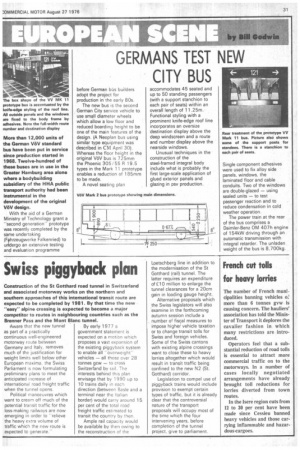GERMANS TEST NEW CITY BUS
Page 33

If you've noticed an error in this article please click here to report it so we can fix it.
More than 12,000 units of the German V8V standard bus have been put in service since production started in 1968. Twelve-hundred of these buses are in use in the Greater Hamburg area alone where a bodybuilding subsidiary of the H HA public transport authority had been instrumental in the development of the original WV design.
With the aid of a German Ministry of Technology grant a second generation'' prototype was recently completed by the same undertaking (Fahrzeugwerke Falkenried) to uridergo an extensive testing and evaluation programme before German bus builders adopt the project for production in the early 80s.
The new bus rs the second German City service vehicle to use small diameter wheels which allow a low floor and reduced boarding height to be one of the main features of the design. (A Neoplan bus using similar type equipment was described in CM April 30). Whereas the floor height in the original VoV bus is 725mm the Phoenic 305/55 R 19.5 types in the Mark 11 prototype enables a reduction of 185mm to be made.
A novel seating plan accommodates 45 seated and up to 50 standing passengers (with a support stanchion to each pair of seats) within an overall length of 11.25m. Functional styling with a prominent knife-edge roof line incorporates an oversize destination display above the deep windscreen and a route and number display above the nearside windows.
Unusual techniques in the construction of the steel-framed integral body include what is probably the first large-scale application of glued exterior panels and glazing in psv production.




















































































